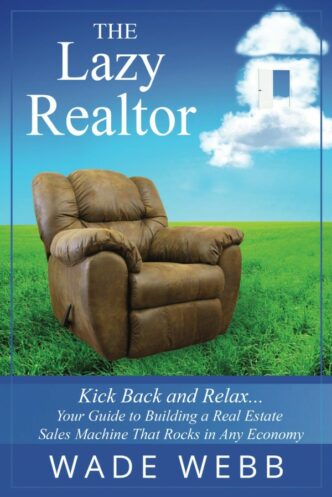An Agents Guide On How We Shift During COVID-19
- Getting Listings In A Low Inventory Market 2024 - April 17, 2024
- Time For A Q2 Shift In Your Real Estate Business? - April 11, 2024
- Where Is The Lesson? - April 3, 2024
 I trust this message this week finds you all safe and sound. Our world has change and a lot of those changes may be permanent. The Covid-19 pandemic has forced us (if you weren’t already) to work from home and to depend exclusively on online communications. It’s not business as usual but it is the unusual for the next while and it is an opportunity for us all to reset and here are some ways to help us all reset and continue business as unusual!
I trust this message this week finds you all safe and sound. Our world has change and a lot of those changes may be permanent. The Covid-19 pandemic has forced us (if you weren’t already) to work from home and to depend exclusively on online communications. It’s not business as usual but it is the unusual for the next while and it is an opportunity for us all to reset and here are some ways to help us all reset and continue business as unusual!
1. Watch your Numbers
If you want to grow your business, start with good data. Like driving a car, you need a dashboard with feedback to know how you are performing. Putting together even a simple weekly dashboard can help identify where you are wasting money and effort, but also be a good motivator for you. Here are some of the basic numbers to watch:
- Personal and professional monthly expenses. Do your budgets now.
- Break-even point. The number of people a day, appointments a week and sales a month it takes to cover your monthly operating expenses.
- Life-time value of a customer. This is simple math: total revenue expected from an average customer less acquisition cost = LTVof a customer. In real estate an example is 1 client of yours = $1,000 annual GCI.
- ROI on advertising. Been boosting ads on Facebook or paying for a Google Adwords listing? Doing ad mail drops? Radio ads? It’s time to put a dollar return on that investment. Don’t throw more money at advertising without knowing your numbers!
- Return on social media. Are you pounding away at building an Instagram following, hoping it will turn into sales? Or starting every day checking Facebook updates? A quick visit to Google Analytics will show the traffic social media brings in. Traffic is only one measure, social media can provide other benefits like: brand awareness, nurturing your followers.
2. Build a Morning Routine
I can’t think of any habit more important to develop than a morning routine. A simple morning routine can get you ready to “go to work” and prepare you for a productive day. New research from the Journal of Management found that “reattachment” to work in the morning is critical of high productivity. “Those who consciously took a few minutes to mentally reattach to their work by reflecting on their goals and priorities experienced ‘a cascade of positive experiences during the day.’” – Inc Magazine. The idea of a morning routine is to reduce the influence of mood, or quality of sleep and to ensure that you can maximize your productivity in what are typically the most productive hours of your day. Some things to include in your routine:
- Before you go to bed make a quick note of the first work you’ll tackle in the morning.
- Wake up at the same time.
- Limit social media or reading/watching the news.
- Inspire and ground yourself. I prefer exercise, but meditation, reading, music, or walking are all great ways to ease into your morning work.
- Eat like an athlete – avoid sugars, simple carbs and fatty foods – instead choose complex carbs, protein and fiber to enjoy steady energy lasting all morning.
- Transition to work time at the same time everyday. (see #5 How to organize your home office, below).
- Work from your Flight Plan (#3, below).
3. Plan Like a Pilot
Pilots would never leave the runway without a clear destination and you should never start your week without clear goals for the week. Take 5 minutes every Monday morning (I walk you through to think through where you want to “land” on Friday. This quick planning routine can be the difference between a chaotic week of distractions and feeling productive on and on your game. You can record your “Flight Plan” in Evernote, a journal, or create a Google Doc. What’s important is you think through a short-list of goals that will move your company forward this week. For larger “boulders” (big projects that take many days/months to complete), list the specific objective you need to complete this week. For example, if updating your website, the goal this week might be to research competitor’s sites and make a list of features you want to change on your site. Now, here’s the real value of your “Flight Plan” – catch yourself coming off a conference call or wrapping up a task and go to your Flight Plan for direction. Between every task is an opportunity to change course back to what’s most important for your business.
4. Ethical Marketing
Take the time to look at how you were marketing in the past and the ways in which you can now market “ethically” and be able to serve with the helps of selling in the future. Coming from the position of help and knowing that it will have a return one day.
Here are some examples.
5.Organize Your Home Office
The mind loves distractions. Something as simple as unopened mail on your desk, or a stack of business cards from a networking session you attended months ago can grab your attention as often as every 12 minutes. “Those distracted by emails and phone calls saw a 10-point fall in their IQ, twice that found in studies on the impact of smoking marijuana.” – London’s Institute of Psychiatry The good news is that a 10 minute home office declutter session can transform your distraction desk to a place of productivity. Here’s how to get started:
- Invest in good quality storage and furniture. A comfortable work-chair, solid desk with bookshelves and simple filing cabinet (I prefer two or three drawer units that fit under the desk) can transform your workspace.
- Put all cords, charging cables and computer paraphernalia in one container and out of sight (for my home-office I invested in matching bookcases, the bottom of one has double cupboard-style doors where I stash stuff I rarely need.)
- Create a system for archiving handwritten notes and paper (see Evernote, below).
- Remove anything that looks like unfinished work. This could be client files, broken eyeglasses, unopened mail or sticky-notes. There will always be distractions like these, now is the time to find a home for them.
- Archive completed work. Client files, project notes, tax returns and research papers can all be archived in inexpensive banker boxes, labeled and stored out-of-sight. Your goal is to dedicate 100% of your attention on the work that matters today.
6. Master Online Tools
If you’ve been hiding from learning basic online tools, those days are gone. The world is getting online – just look at the explosion of individuals, businesses and governments scrambling to learn how to use tools like zoom.us during the Covid-19 pandemic. Not sure you have what you need? Here are some of the basics you should have in your office:
- Good WIFI connection. Video conferencing tools, like zoom, require high-speed bandwidth. Use free tools like this one to test your WIFI speeds and call your carrier if in doubt.
- Video conferencing. It’s hard to beat the convenience of jumping on a quick video call to meet a new business connection or sort out some work details with a team member. We moved to zoom 4 years ago. The tool is easy to use, has lots of features and the low-cost account allows for unlimited calls with lots of features like break-out rooms, chat, polls and more. We use the webinar account for our BlogWorks broadcasts.
- Audio recording. Now that you’re doing more online conference calls you’ll need a good microphone. The earbuds that came with your phone are at least better than nothing. Or upgrade to a good lavalier-style
microphone. - Lighting kit. You are going to be video conferencing a lot more and a simple lighting kit will remove distracting shadows, help with early morning or late night calls (helpful if you work in different time zones) and set you up for recording videos.
- Video hosting. If you are recording video for your first online course or to add to your website you need to first store that clip on a hosting service. We’ve been using Vimeo for years and love how simple it is to upload and organize all our recordings.
- Team communications. Organize all your team communications and reporting with a free account on Slack. It’s easy to use and you can upgrade or third party apps at any time.
- SMS messaging. It’s hard to beat text messages for getting the attention of a contractor, supplier or even an employee distracted with a big project. If you’re using text messaging a lot, load the app on your computer to make it easier to share documents, images and so you can type with your keyboard.
- Storage. Moving your business to online will mean you need to share documents (see Google Docs next), images, reports, PDF’s and photos with clients and team members. Email is not the way to do that. Dropbox allows you to control what stays on your computer (so you can free up precious storage space) and who you share documents with.
- Google Docs. It’s hard to beat the ubiquitous suite of Google’s free tools for creating and sharing documents. You can quickly create and share documents, spreadsheets and choose who gets access and can either view, comment, or edit.
- Evernote. I haven’t found a better tool for organizing ideas, capturing handwritten notes from a meeting or snagging web pages (Evernote can strip off all advertising). Michael Hyatt calls Evernote his “digital brain” for good reason. Start with a free account, upgrade if you want to access your notes when you are offline.
7. Separate Work and Home
Now that you have your home office set up with easy access to the world and the ability to record videos, write your next book and grind through a mountain of work you need boundaries. Working long hours without clear lines between work time and home time is a recipe for burnout, not to mention the impact it will have on immediate relationships. But, it’s hard to have work/life separation when your home office is down the hall from your kitchen. Here’s how to get started:
- Have all your work stuff (records, chair, desk, recycling, etc.) in one place instead of spread out in your house. Ideally, have a door on that room that you close when you’re not “at the office.”
- Set hours for “going” to work and packing up at the end of the day.
- Dress for work. Research shows that when we dress to go to work it can put us in the mind space to be more productive. “Working in your pajamas may seem like fun for a couple of days, but you’ll soon find any productivity wanes,” writes Joshua Duvall.
- Set your phone to turn off alerts an hour before you go to bed.
- Avoid checking email or phone messages during non-work hours.
Your success as a business owner depends on your ability to focus and get work down as efficiently as possible. And that includes updating your equipment and systems. Most of the suggestions in this guide can be accomplished in a few minutes or with a quick visit to Amazon. Some (like creating boundaries between work and home) will take longer to practice and develop into habits.
So there you have a few ways for us all to reset and set sail in today’s unusual usual. Feel free to comment below some of the ideas and ways you have been able to rest yourself and your real estate business the past few weeks love to hear from you
Strength and Courage,
Wade


FIRST 2 CHAPTERS FREE
My book, The Lazy Realtor, is available in Paperback or Kindle format, on Amazon. You can preview it here and I’ll even include these bonus items:

Phone: (250) 212-8220 | Wade@agentsboost.com
